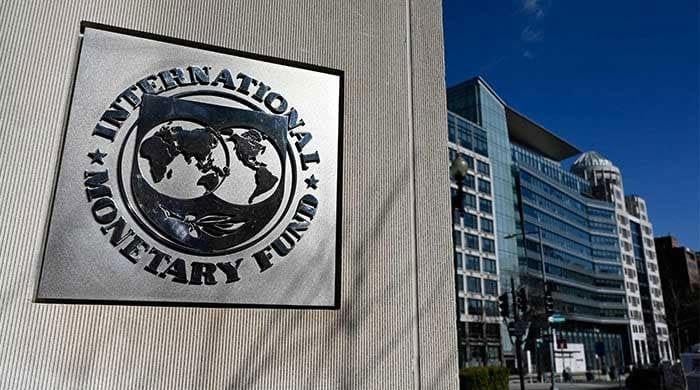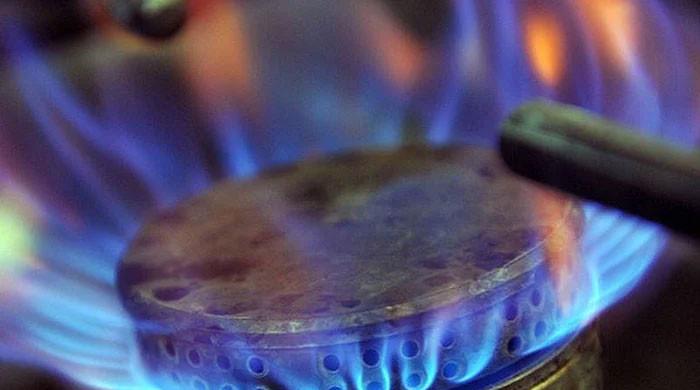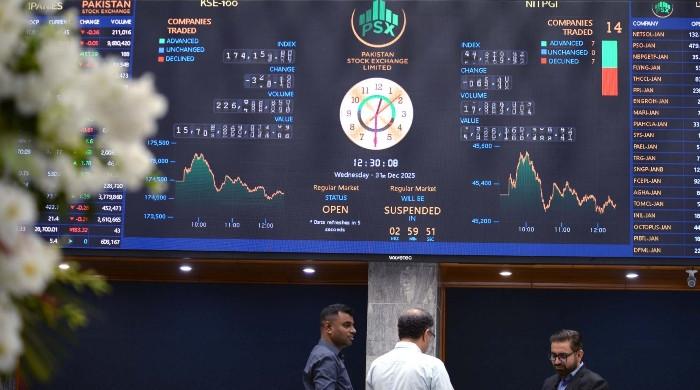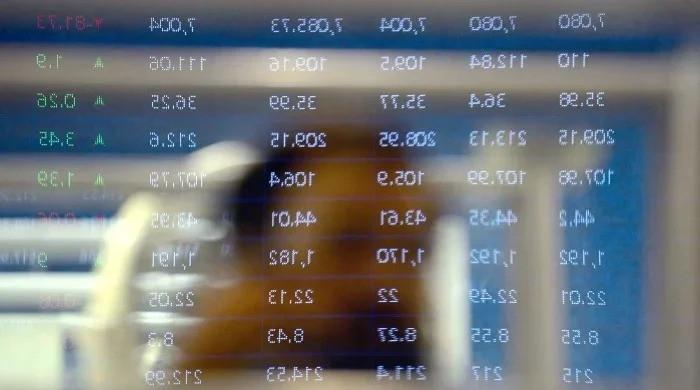Finance ministry forecasts surge in economic activity, drop in inflation
Projections indicate inflation anticipated to decrease from 31.4% in September to around 27%–29%
November 01, 2023

- Ministry of Finance paints “positive picture” of the economy.
- Ministry is seeking concessional funding from multilateral sources.
- Report highlights challenge of increased debt servicing costs.
ISLAMABAD: The Ministry of Finance has painted a “positive picture” of the economy ahead of the International Monetary Fund (IMF) loan programme review, forecasting improvement in in overall economic activity throughout the fiscal year.
The finance minister anticipated that overall economic activity will remain upbeat due to a rebound in domestic economic activities and an improvement in inflationary pressures, The News reported on Wednesday.
Projections indicate that the Consumer Price Index (CPI)-based monthly inflation is anticipated to decrease from 31.4% in September to around 27%–29% in October 2023.
To address external financing requirements, the ministry is actively seeking concessional funding from multilateral sources such as the World Bank, Asian Development Bank (ADB), and Islamic Development Bank (IsDB), aiming for a total of $6.3 billion. Alongside the IMF’s approval of $3 billion, bilateral assistance of about US$10 billion is also expected.
The government foresees a recovery in remittances for October 2023, following a reduction in spreads between the interbank and open market to below 1%.
However, global inflation’s impact on the disposable incomes of overseas workers has resulted in lower remittances. Ministry officials highlighted a slowdown in remittances across several countries, notably Bangladesh, India, and the Philippines.
In the monthly economic report released on Tuesday, the Ministry of Finance stated: “In the coming months, overall economic activity is expected to remain positive throughout the outgoing fiscal year due to a rebound in domestic economic activities and an improvement in inflationary pressures. Recent coordinated efforts by government organisations to address macroeconomic imbalances aim to achieve stabilisation and foster sustainable, inclusive economic growth in the medium to long term.
“Significant progress on the fiscal and external accounts has begun to translate into a surge in economic activity. Positive economic data and indications of a recovering economy have led to an 11% surge in the PSX in October, crossing the psychological benchmark of 51,000 points for the first time since May 2017.
“Both international and domestic bond markets have also seen an 8% rally in October, buoyed by expectations of easing inflationary pressures and a favourable outlook for the IMF staff review in November. The Pakistani rupee (PKR) appreciated by 9% in October due to reforms initiated by exchange companies and a crackdown on illegal transactions.
“The Monthly Economic Indicator (MEI) for September 2023 marked the third consecutive month of positive gains in the index, reflecting growth momentum in high-frequency economic variables.
“The GDP growth outlook has improved, displaying positive momentum in manufacturing activity and a promising outlook for agricultural output. Recent Large Scale Manufacturing (LSM) data reported a positive growth of 2.5% in August, reversing 14 months of decline in the manufacturing sector.
“Several factors, including the removal of import restrictions, clearance of outstanding Letters of Credit (L/Cs), and improved dollar liquidity in markets due to an increase in the State Bank of Pakistan’s Foreign Exchange (FX) reserves, have contributed to the uptick in economic activity. The recovery in the manufacturing sector encompasses the export sector, construction activity, and consumer goods, all reflecting gains in August.
“The growth in various industries such as ready-made garments, cement, food, beverages, pharmaceuticals, and power generation portrays a resilient economic revival. In the agriculture sector, increased production of cotton and rice promises a favourable outlook for exports and overall economic growth in FY2024.
“Additionally, positive trends in farm tractor production and sales, strong revenue performance in Q1 FY2024, and noteworthy revenue collection in various sectors such as Federal Board of Revenue (FBR) and non-tax revenue have contributed to the economic momentum.”
The report also highlighted the challenges, such as increased costs in servicing public debt due to rising State Bank of Pakistan (SBP) policy rates and a weaker PKR.
Despite these challenges, the government has managed to restrain expenditure growth through prudent measures, including a reduction in untargeted subsidies and spending on new projects. While headline inflation saw a significant increase to 31.4% year-on-year in September 2023 from 27.4% in August, this was primarily attributed to a one-time power tariff adjustment in September 2022.
However, food inflation softened to 33% year-on-year in September from 39% year-on-year in August, with notable declines in prices of items like tomatoes, chicken, and cooking oil.
The October 30 Monetary Policy Statement (MPS) indicated an expected significant decline in inflation in October, owing to reductions in fuel prices, ease in major food commodity prices, and a favourable base effect.
The Monetary Policy Committee (MPC) maintained that inflation would significantly decrease in the second half of FY24, barring any major adverse developments.
Externally, global markets remain volatile, although the global growth outlook has improved. Despite this, some economies are yet to fully recover to pre-pandemic levels due to factors such as geopolitical tensions, monetary policy adjustments, reduced fiscal support, and extreme weather events.
In the first three months of the current fiscal year, the current account deficit (CAD) decreased by 58% to $0.95 billion. The full-year CAD is expected to stabilise around $6.5 billion (1.5% of GDP) in FY2024 as trade and investment flows normalize. The State Bank of Pakistan’s Foreign Exchange (FX) reserves have stabilised at around $7.5 billion, providing approximately 1.5 months of import cover.









